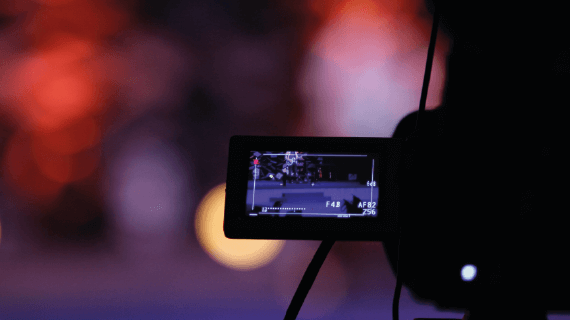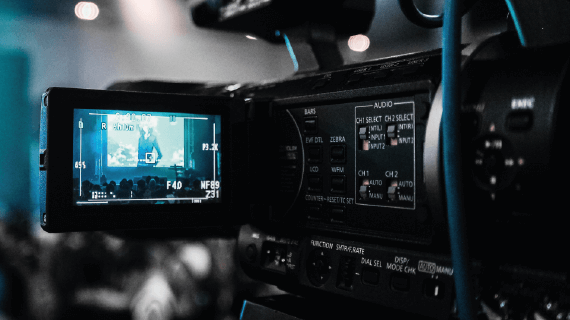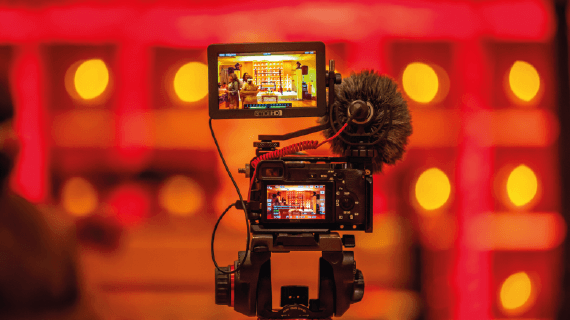A lot of planning goes into making an event memorable. The same should apply to live streaming that
event. Whether it’s sport, entertainment, business or education, careful planning will ensure that your
live stream enhances your brand and you capture some fabulous highlights to use again and again.
Nothing annoys a viewer more than a live stream falling over or being poorly produced. This can
leave viewers feeling bored, annoyed even angry. In some cases, it can cause extensive damage to
your brand.
Whether it’s a free stream or an exclusive Pay Per View event, disgruntled viewers will make you pay
for a bad live stream. Here’s a list of things that will make your live stream a success.
1. Upload speed
The number one reason for a live stream failing, particularly in Australia, is slow upload speeds.
Across the nation, our upload speeds are notoriously slow. You need to test your upload speeds
from your venue in advance of your event. Try and simulate the time and day of your event.
2. Pipe connections
If you’re relying on a pipe connection within a venue, make sure that pipe isn’t going to be
throttled by somebody downloading a 4K version of every episode of Game of Thrones. On the
flipside, make sure your live stream isn’t going to stop the CEO using the internet to close a major
deal.
3. Mobile connections
If you’re relying on a mobile connection, it’s ideal to have the ability to switch from one provider to
another. You might find that one network is being overused at various points and this usually
happens at the most important time of an event. The time when you least want to lose your
stream. The time when audience members are jumping onto their phones and social media to tell
the world what they’re watching. A good streaming provider will be able to switch seamlessly from
one mobile network to another without losing a second of your live stream.
4. CBD buildings
If you’re streaming out a tall building in the CBD and you’re relying on a mobile network, you need
to test the network from the floor that you will be streaming from. Internet speeds can vary quite
dramatically from different floors of the same building. It’s Newton’s fourth law of physics.
Apparently.
5. Cameras
Sometimes having one camera at an event or using your laptop’s camera is entirely appropriate.
If it’s a short event with one speaker, you can get away with one camera. For longer events with
multiple speakers or fast-moving action, it’s preferable to have multiple cameras with a director
regularly choosing the best view. This keeps your audience engaged and shows that you’re
serious about their viewing experience. A live stream should reflect your brand and values.
6. Equipment checks
Too often a live stream fails because sufficient time hasn’t been allocated in advance of the
stream itself to get all the gear in position and tested. You can’t expect multiple camera operators
to plug into a streaming box and go. You need to make sure enough time is allocated to checking
equipment onsite before you go live. There will be plenty of equipment and you want this to be
unobtrusive.
7. Venue Reconnaissance
Make sure you have notified the venue in advance of your live stream. If you have to lug heavy
equipment into the venue, you need to know the easiest way to access the building and where
you can park. Some venues will have restrictions on how you bring that equipment into a venue
and this might slow you down. If your live streaming provider has worked with the venue, then
that should make things a bit smoother. Some venues will allocate a representative to shadow
you whilst things are being set up and they may charge you for the privilege. Be prepared.
8. Download speeds
Buffering occurs when a video pauses whilst more data is downloaded. If the viewer has a
download speed that can’t handle the amount of data your live stream is generating, they’ll have
an ordinary viewing experience. Once a live stream starts buffering, it’s likely to keep doing it so
it’s best to minimise this possibility.
Some live streaming providers will pick a bit rate that reduces the amount of data that is sent out.
This becomes a trade-off between the quality of video being sent out and minimising the buffering
that viewers experience. The downside is that viewers with great internet speeds often feel that
they’re watching a stream of lower quality than their internet connection can handle.
Another solution is to stream at a multi bit or adaptive bit rate. This works by detecting a viewer’s
internet speed in real time and adjusting the quality of the live stream accordingly. Ideal if you can
get it, but you might have to pay a little more.
9. Extra equipment
Consider the venue you’re using and whether you will need any extra equipment such as lights,
microphones and digital screens. Some venues will provide those items free of charge, whilst
others will charge. You should compare the prices charged by the venue versus the streaming
provider.
Most live streaming providers will prefer to work solely with their own equipment to ensure
compatibility. Even if you have to pay a little extra, it can be worth it. If your live stream fails
because equipment is incompatible, trying to trouble shoot when you’re live streaming is less than
ideal.
Check the lighting in the venue to determine whether it’s adequate. Run that test at the same time
as you will be live streaming. If you’re in a venue with large windows, check the lighting with the
blinds both open and closed. If they’re electric blinds, make sure you’ll have access to the
controls to operate them on the day.
Microphones can also be tricky. If presenters are speaking from a lectern with a microphone it
should be straightforward for the streaming provider to plug into. Some presenters might prefer a
hand-held microphone whilst others will prefer a lapel microphone.
Depending on the size of your venue and the number of people within that venue, you may want
to have some appropriately sized digital screens so the audience within the venue gets the best
possible view, particularly if there are slides or video as part of a presentation.
10. Live chat
A double-edged sword. The good thing about running a live chat is that your audience has a voice
and you receive instant feedback. The bad thing about running a live chat is that your audience
participates and you receive feedback.
If your live stream goes well, a live chat really adds to the event. You can take questions and
presenters can respond to those questions in real time.
If your live stream or event doesn’t go so well, negative comments tend to come thick and fast.
Viewers can feed off each other making things worse.
Ask yourself who is likely to be watching and will viewers know each other. For smaller more
intimate events where viewers are likely to know each other, comments are likely to be more
reserved.
Sometimes social media platforms are perfect for a live chat. We’ve run events in the past where
a screen at the event has been dedicated to a Twitter fall. Using social media for live comments
can encourage more viewers to log in and watch when they might not otherwise have been aware
of the live stream.
11. Marketing
Build it and they will come? Nope. Just because you’re putting on a live stream doesn’t mean
people will watch. You need to get the message out to your audience across all the relevant social
channels. Don’t push your messages out too early and don’t leave it to the last minute either.
Think Goldilocks. Remind people as the event draw nears. Make sure you get the time and date
right for your event, making sure that viewers understand what time zone you are in. Sounds
simple, right? You’ll be amazed how many people get this wrong.
12. Push traffic to the right location
Most people have multiple options when it comes to hosting a live stream. Spondo allows you to
embed a live streaming player on your own website or to set up a dedicated landing page. Some
people will use a network of affiliates who will sell the live stream from their own site to their
audience in return for a clip of the ticket. You can also run your live stream through Facebook or
even YouTube. Pick the medium that will work best for your audience and don’t forget to push
them to the right location.
13. Viewer numbers
Some live streaming services provide a display that tells you how many viewers are watching.
This can be great and can generate lots of momentum. Nothing draws a crowd like a
crowd. On the flipside, if viewer numbers are lower than you expected, this can reflect poorly on
your brand. Think carefully about whether displaying viewer numbers will help or hinder.
14. Presenters
Make sure your presenters or event participants know in advance that you are live streaming. It’s
not something you can spring on them at the last minute. Presenters may tailor their content if
they know it’s being beamed to a wider audience or being recorded for future playback. On the
flipside, some of your presenters may want a copy of the presentation and will be willing to pay
you for that. This could be another lucrative revenue stream for you.
15. Be brave
The best events are bold and designed to engage and entertain an audience. Do the
same with your live stream!






